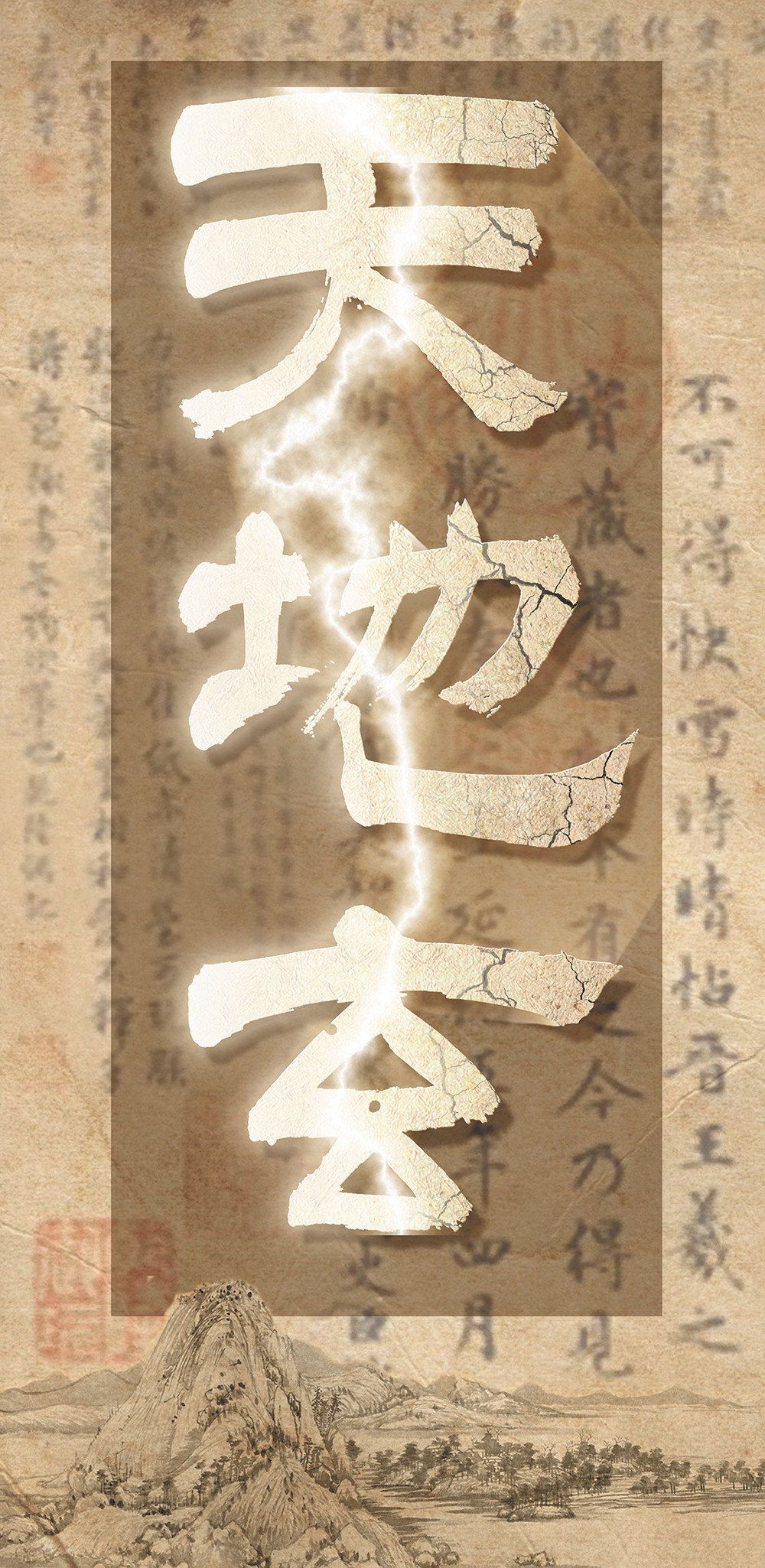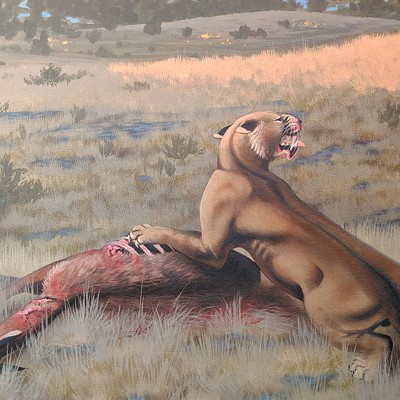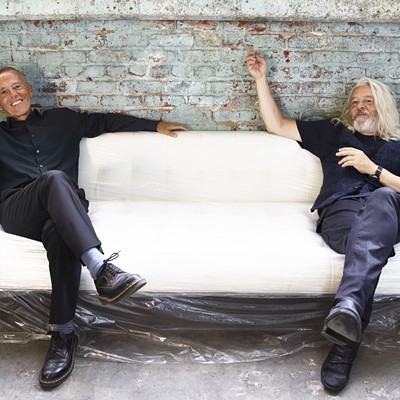Kosuke Imamura remembers the prominence of Chinese artist Wang Xizhi, the revered "Calligraphy Saint," when he was a little kid growing up in Japan.
Japanese cartoons and comic books told stories about the ancient artist and how he came to create a calligraphy piece called Ji Wang Sheng Jiao Xu — literally translated, "Preface of Sacred Book by Collected Characters." High schoolers were offered three electives: music, martial arts or calligraphy in the style of Wang.
"In Japan, they have museums. This person Wang is horribly famous," says Imamura, now a computer science professor at Eastern Washington University. "Everyone wants to practice his calligraphy. I did that, too. When I was in high school, I took a calligraphy class and the textbook was his writing."
Decades later, ensconced in his EWU office cluttered with computers, bookshelves, martial arts training swords and rollerblades, the pony-tailed Imamura finds himself once again mesmerized by the intricately flowing prose Wang created between 321 and 379 A.D.
Except now, instead of it being homework, it's part of a quest to use modern technology to unveil Wang's original calligraphy characters from an array of imitators' works, in hopes of creating a database dedicated to the one true master of the form.
It's not going to be easy, even though Imamura thought it might be at first. Dr. Akemi Nishiyama, an art professor and calligraphy expert from Japan's Mukogawa Women's University, first approached him in 2006 and asked if it was possible to create a computer program that could quickly analyze images of calligraphy and determine their sources.
"I thought, 'Yeah, this will be easy!' It wasn't." Imamura says, laughing at the idea nine years later.
Still, fellow EWU professor Steve Simmons believes Imamura is the right detective for the case of uncovering cultural artifacts through image processing. They work together in the Computer Science department, and Simmons calls Imamura "one of the most creative and imaginative minds at Eastern."
While Imamura has tackled any number of challenges in his career, nothing quite reached the complexity he's facing on the Wang project.
Consider this: All of Wang's original works are lost, except a stele — a large engraved stone — of the "Preface of Sacred Book" calligraphy. And that stele isn't actually Wang's work but that of a monk named Huai Ren, ordered by the emperor 300 years after Wang's death to produce the stele in Wang's original style. Huai Ren pulled characters from Wang's then-existing originals, and when he couldn't find a certain character, he cobbled them together from parts of other characters, replicating the master's style as well as he could. It took Huai Ren 25 years to complete his task.
The challenges facing Imamura and his partners are many as they try to separate the original Wang characters from his imitators', starting with the fact that there's no way of knowing how many Wang imitators are out there. There's also no way of knowing how many characters Wang himself might have used in his calligraphy. Imamura says there are about 20,000 Chinese characters commonly used today; that number might have been a lot higher in Wang's time.
It's a lot of data to sift through — books filled with calligraphy characters that, up to now, have been left to experts and their human eyes to determine their authenticity.
Imamura and his students are creating programs that hope to replicate what the experts' eyes do — finding authentic Wang characters in some places, labeling imitators when they're discovered — only doing it a lot faster. Because calligraphy characters have no particular order, indexing them in a way that makes them easy to find for comparison's sake is of the utmost importance, and incredibly challenging.
Many of the images they have to work with are reproductions of reproductions. Various computer programs can eliminate some of the images' "noise" — small marks and flecks surrounding the calligraphy — but that raises another tricky problem.
"The computer or algorithms can't tell if some things are 'noise' or brushstrokes," Imamura says. "If you've done calligraphy, you can tell. But that's human eye."
Despite such challenges, Imamura is confident in the ultimate long-term success of the project, as long as the team secures funding that allows them to keep pursuing Wang's original vision. If they get enough money, the team will be able to buy enough storage for the massive amounts of data needed to sift through tens of thousands of characters, and potentially buy a 3-D printer that would allow them to make a complete reproduction of the stele to have in Cheney.
"At this moment, we want to have a database in a small scale to prove that this can be done, and then we can ask for funding," Imamura says. "No one else has done this. It's a big thing." ♦


























